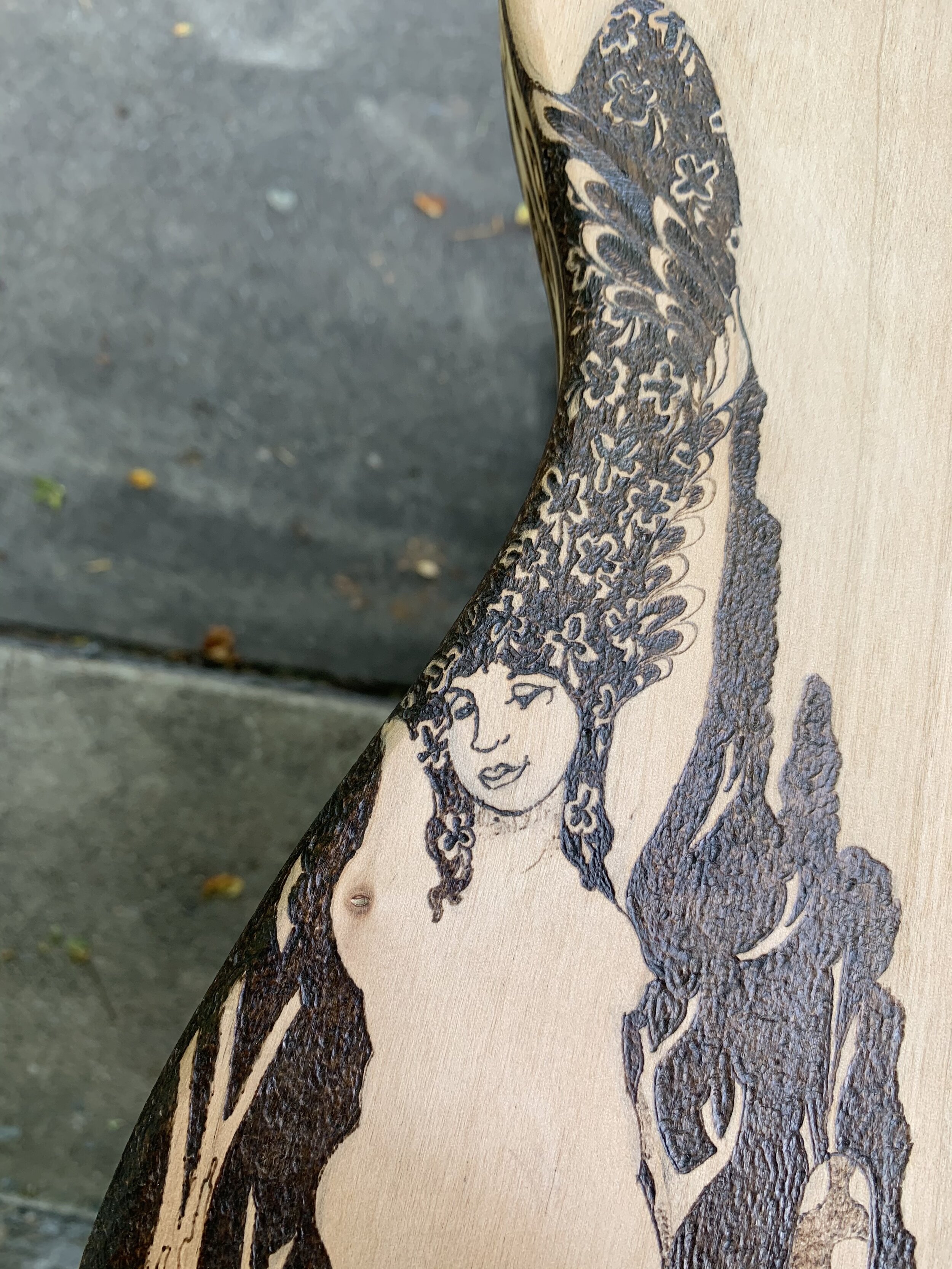To Aubrey Beardsley (1872-1898)
The Oracle of Spleen
(NSFW)

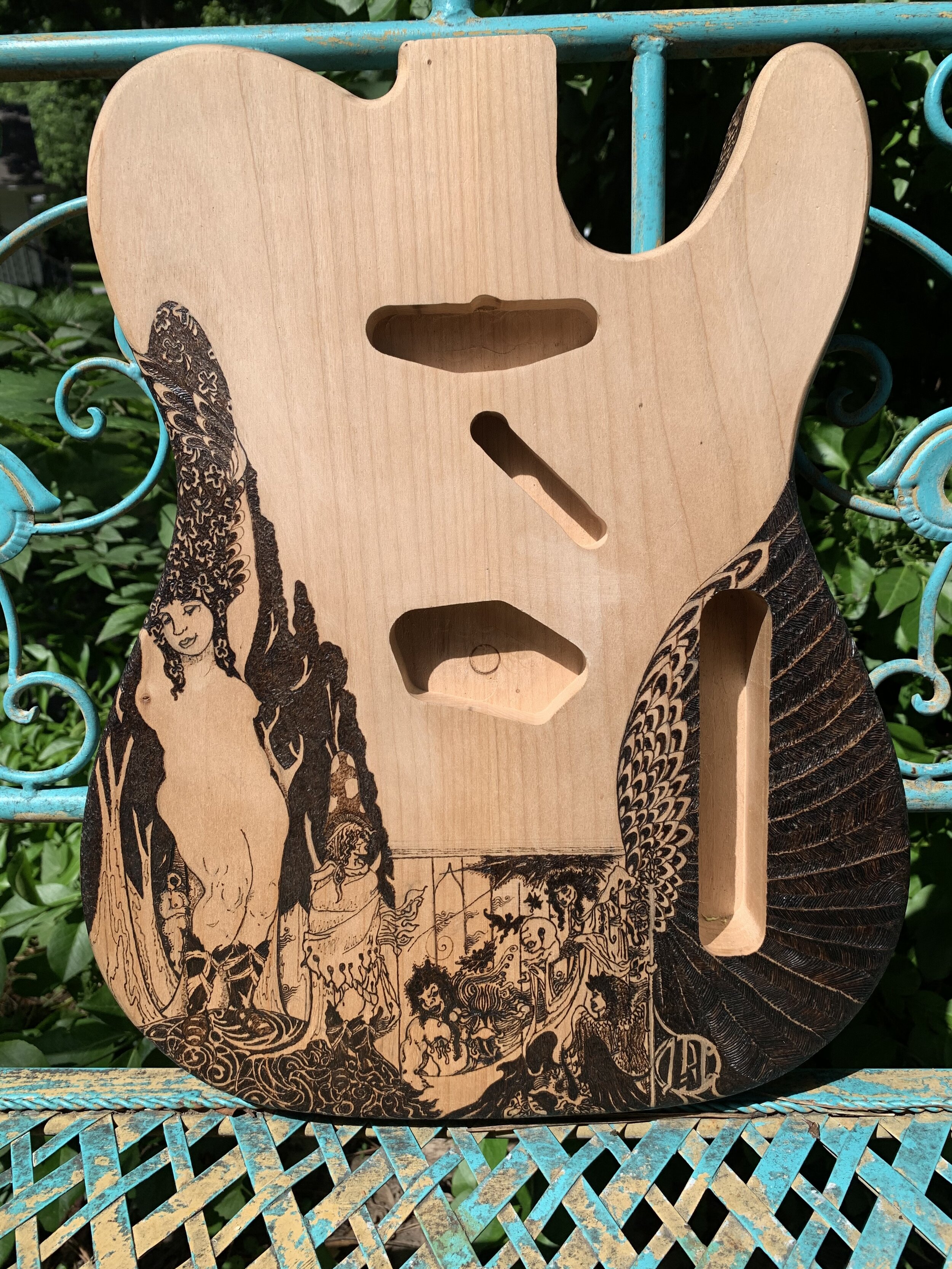
“The Oracle of Spleen” is a tribute to the work of Aubrey Beardsley, An English illustrator who died in 1898 at the age of 25. He was a founding figure of the art nouveau movement. I discovered him when I was a teenager, and was completely blown away by the slightly dangerous and exciting energy of his work. I’ve wanted to do a Beardsley guitar (now I want to do a whole series) for a long time, because he’s one of the most rock n’ roll artists I know.
The name of the guitar is a double-entendre that I think Beardsley would have approved of. Two of his works that are foundational to the guitar graphics are “The Cave of Spleen”, and “The Oracle”, so the name can be read as a tribute to those two amazing achievements of his. In combination, however, the title refers to a theme that pervades Beardsley’s art, which focuses on erotic decadence and allegories of appetite as a means to transcendence, a potential door to a deeper grasp of the nature of reality, and which is a pervasive theme of this guitar artwork (guitartwork?) as well.
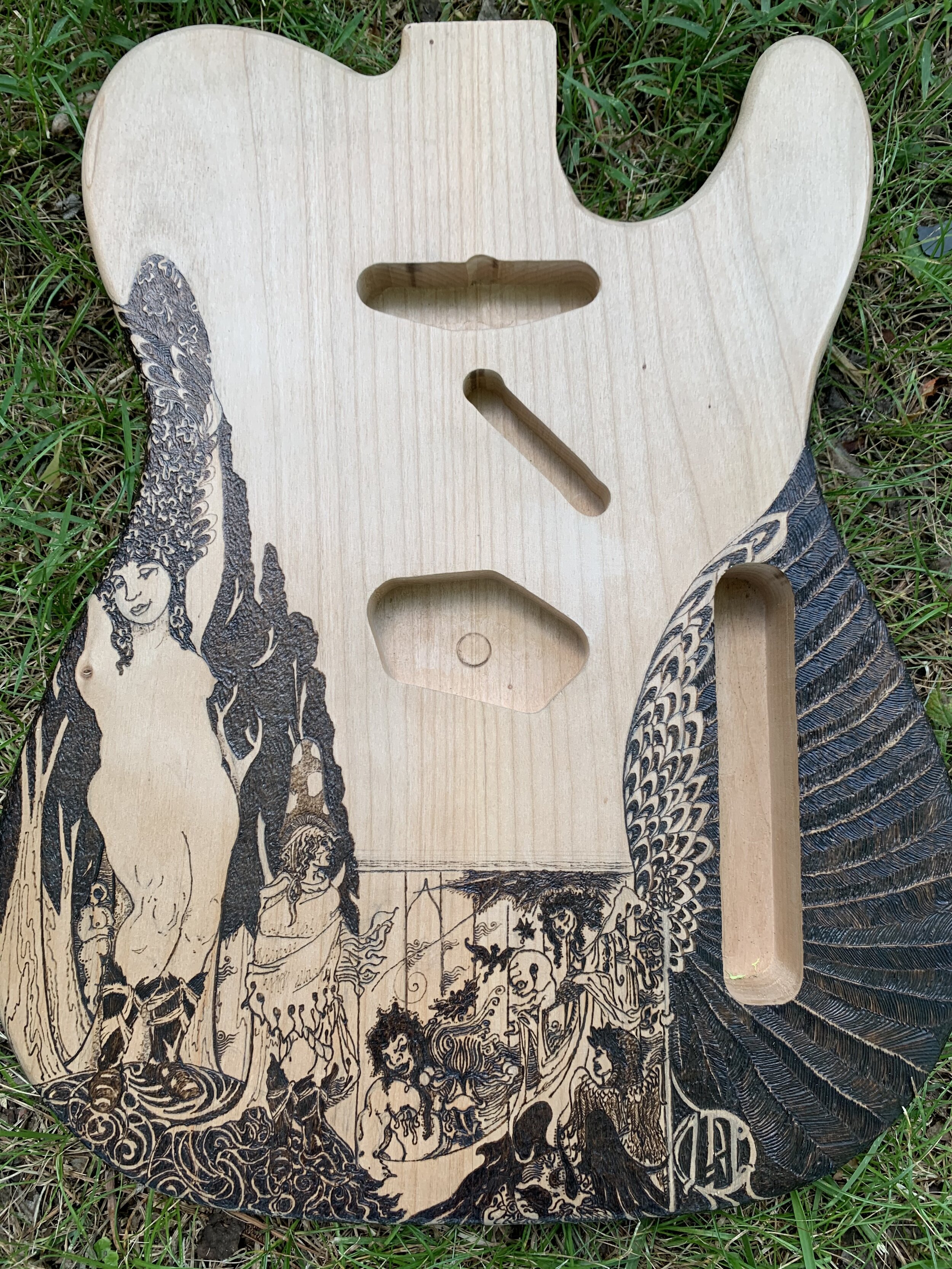

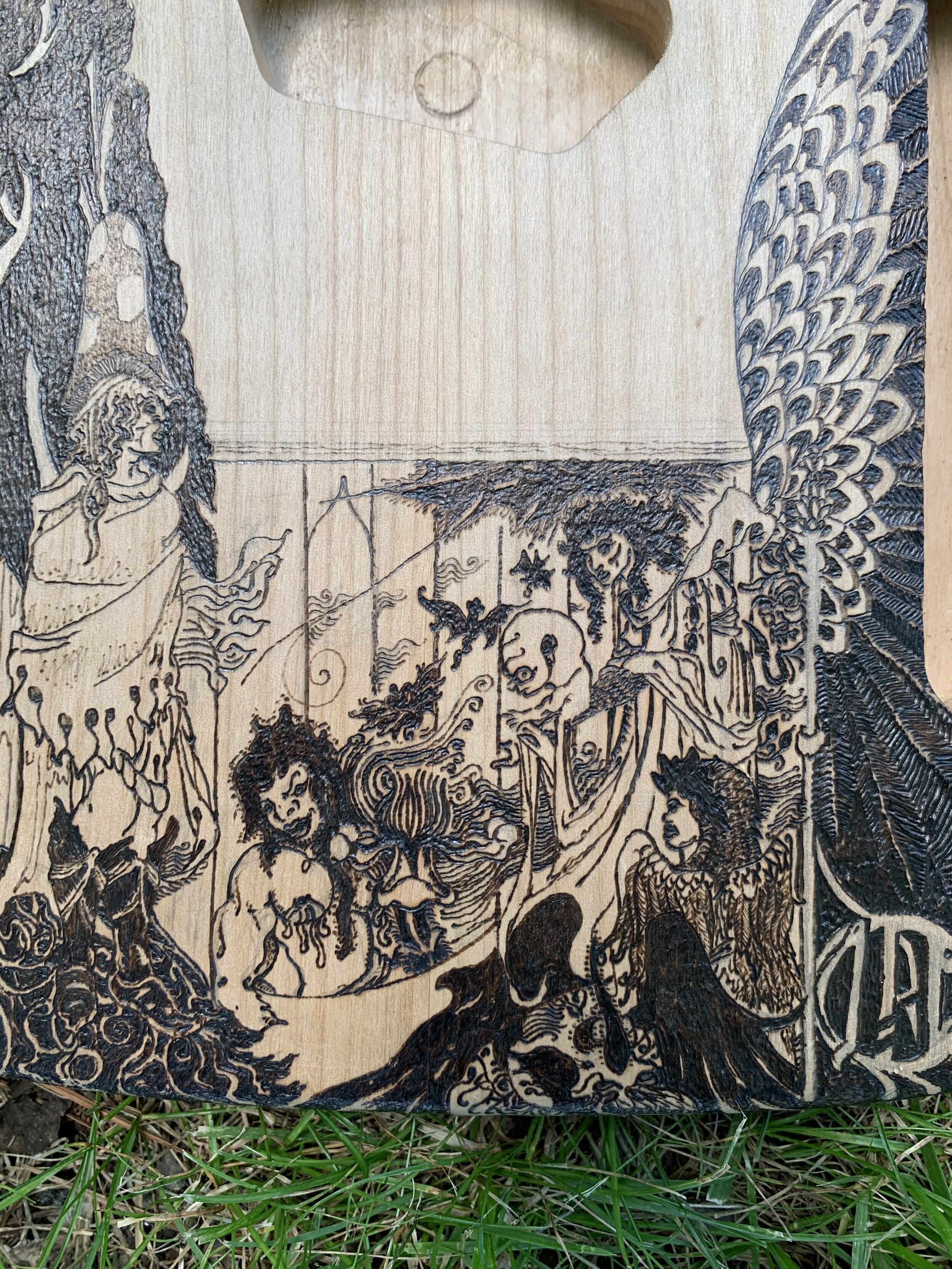

The front of the guitar is an elaboration of the oracle scene from Beardsley’s illustrations of ‘The True History of Lucian of Samosata’.
A portrait of the site of a mystical experience, a place where the voice of another reality can be heard, the “Oracle” reminds me a great deal of some of the paintings and metalwork tableaux of Haitian artists depicting rituals. It’s elaborated here with some additional layers of symbolism. The wood-nymph pictured is based on some of Beardsley’s “Lysistra” illustrations, though the lines of the left half or her torso are simply those of the grain of the wood. The flower/ribbons in her hair make it clear that she is a vegetal spirit. Her arms end in wings while the lines of her boots echo the outlines of the roots around her. The fact that her torso is unmarked aside from any marks naturally present in the grain of the wood demonstrates that her body is the body of the instrument, and she is, in fact, the indwelling spirit of the guitar itself. Her wings are sound, her body is wood, and her feet stand on a hill riddled with mycelium, the wood-wide web that allowed the tree to communicate with those around it before the guitar was ever shaped. In other words, she was born knowing how to speak. Between her and the oracle proper stands the querent, the musician, wearing a fly agaric mushroom hat that indicates that they, too, are participating in the conversation that the wood is having with the spirit world, the wings of which fan out behind the shrine as an emblem of the Larger Forces at work here.


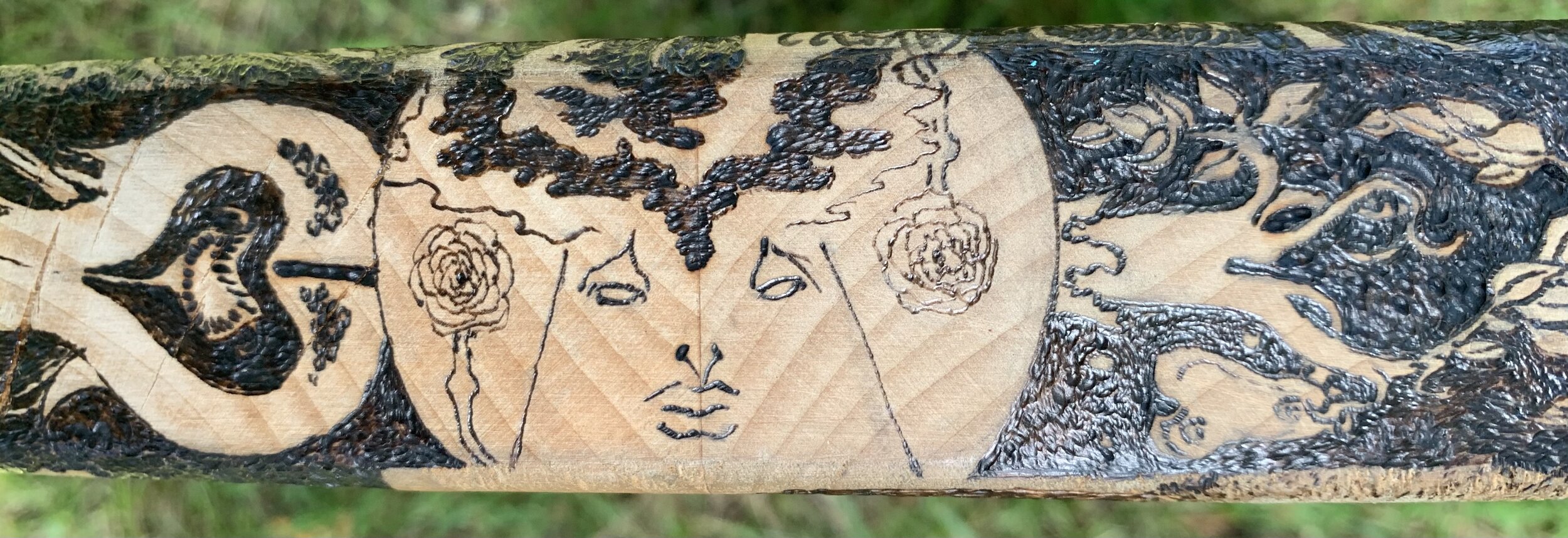
One hallmark of the art nouveau movement was the idea that decorative art had meaning and dignity, and that “craft” was as valid as “art”.
Beardsley decorated anything that would stand still long enough. He created publication covers, advertisements, and some of the most elaborately stylized borders since the medieval period. It seems only fitting that a guitar tribute to him would be bordered on both sides. The motifs are the suggestively fleshly pears from his “La Beale Isoud at Joyous Gard” and the pointedly anatomical references of the peacock feathers he designed for the cover of “Salome”, joined at the bottom of the piece by his image of the moon.




The back of the guitar is based primarily on “The Cave of Spleen”, one of Beardsley’s most challenging and complex drawings.
If I had to describe the theme of the left side of the back, it would be as a meditation on the “male” blueprint for how the lower impulses can lead to enlightenment. At the bottom of the left hand side is a group of four figures whom I think of as as a faun, a succubus, Dionysus and Pluto or Dis (from the frontispiece of “Plays” by John Davidson). These figures here represent (among other things), the appetites of the body and its limitations. Pictured towering above them (and arising from the drives they represent) is the image of Siegfried as the dragon-killer, the self-aware protagonist who has achieved mastery of his own impulses through taking action in the world. Above our hero, swathed in blooms, towers a sinister hermaphroditic herm whose secondary sexual characteristics are in fact eyes, indicating that They are a guardian of hidden knowledge, of insight obtained through acting on impulse.


The central figure of the lower guitar is the musician from Beardsley’s “Stomach-Dance”, 1907.
Conceived of here as the Aztec Old God of Fire, he represents entropy, poised at the balance between memory above him and oblivion below. Memory here is a wizened crone, clutching books and scrolls to her chest even as the flames consume (or produce, depending on your perspective) her skirts. Oblivion is typified here as the interment of Kore, the Maiden, in her jeweled casket/powder box. Between Memory and Pluto broods the Guide, the Higher Self that knows its destiny. Between the Guide and Memory coils the winged stalk of The Soul, an image that would have been familiar to any Classic Mayan.


At the summit of the back, crowning the evolution of the soul, is eros, the apotheosis of the idea that desire is a divinity.
The Herm to His Right is rabbit-eared, and represents submission and self-sacrifice as a means to enlightenment. His robe is clutched tightly to him, and he holds an unplayed Pan-pipe in one hand, symbolizing that the truth he represents cannot be perceived until the surrender has been made. His is the enlightenment of response, that which obtains self-knowledge as a result of experience.




Descending on the right hand side, we find salome.
She is conceived here as the feminine counterpart of Siegfried on the left, anima to his animus. Whereas he represents individuation through action, Salome represents individuation (the peacock robe, self-awareness through self-regard) through reaction and response, those parts of ourselves we only come to know as they are awakened and illuminated by our response to stimuli. Below her are the trio of Pierrot, Pombagira and Exu: Laughter, Creativity, and the Secret Gardener.
Between Pierrot and Pluto, at the cloven hooves of the Old God of Fire is the Interment of the Maiden, a scene in which a satyr and an imp tuck an unconscious flower-crowned figure (Kore/Persephone) into an empty powder-box, in a pantomime funeral. Even as they tuck her away however, her dreaming self (Psyche) dances away behind them, unscathed and uncontainable.
On the lower neck of the guitar, a monkey manservant pulls back a drapery while holding aloft a candle, revealing an abyss from which a face rises to regard the observer.














Eros Phanes, the primordial God of Desire who brings forth the world, is pictured here between the herms of left and right, domination and submission
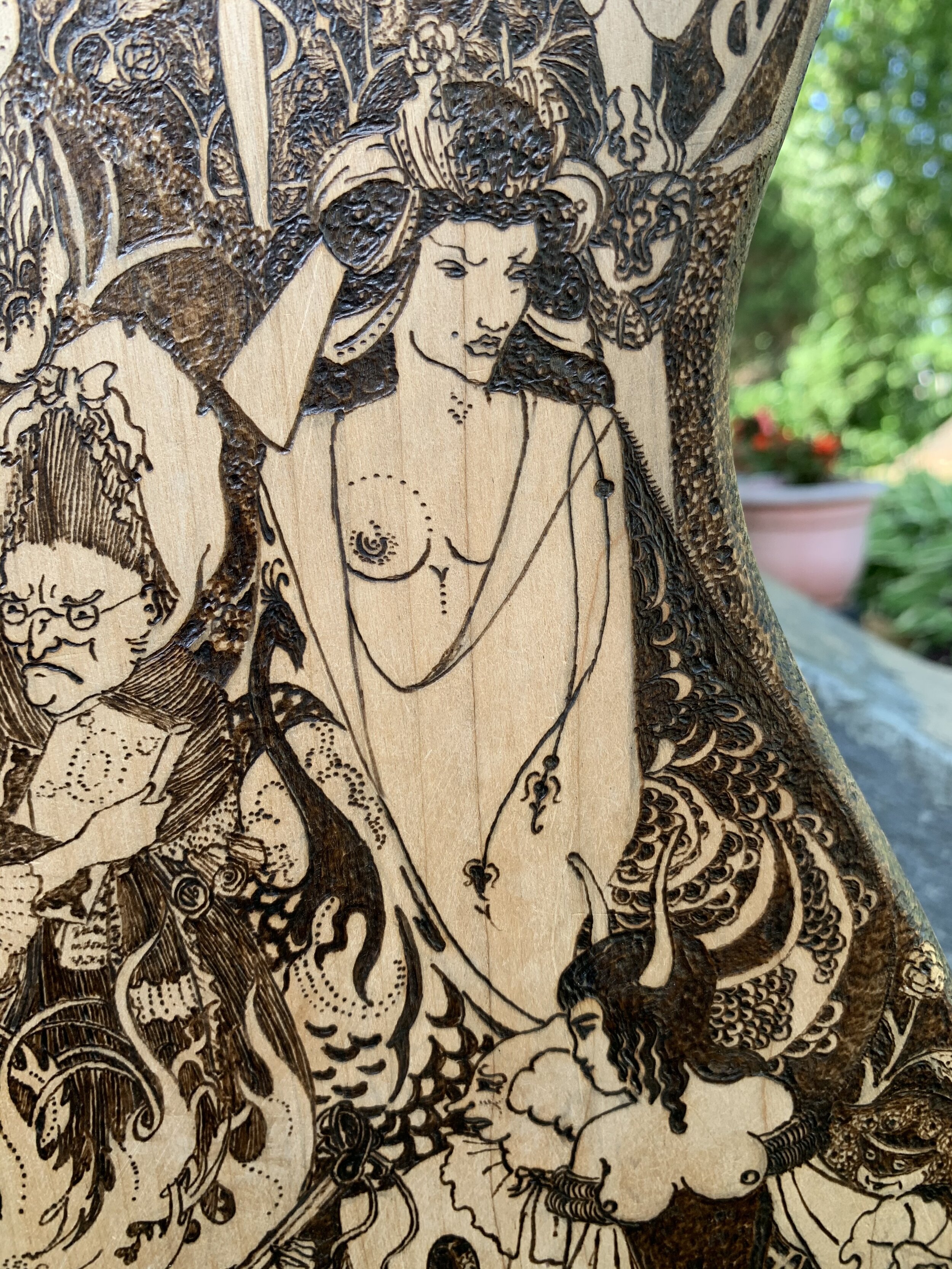



Panning from right to left across the center of the back, we see Salome (the receptive), Memory as the foundation of ego, the persistent soul, and Siegfried (the active).




Between the soul and death we find the seer, the guide of the metaphysical caravanserai, the pilot who remembers what we had to forget in order to come here.
To his right, (our left) we encounter Dissolution and Delirium and Distraction and Desire . . .
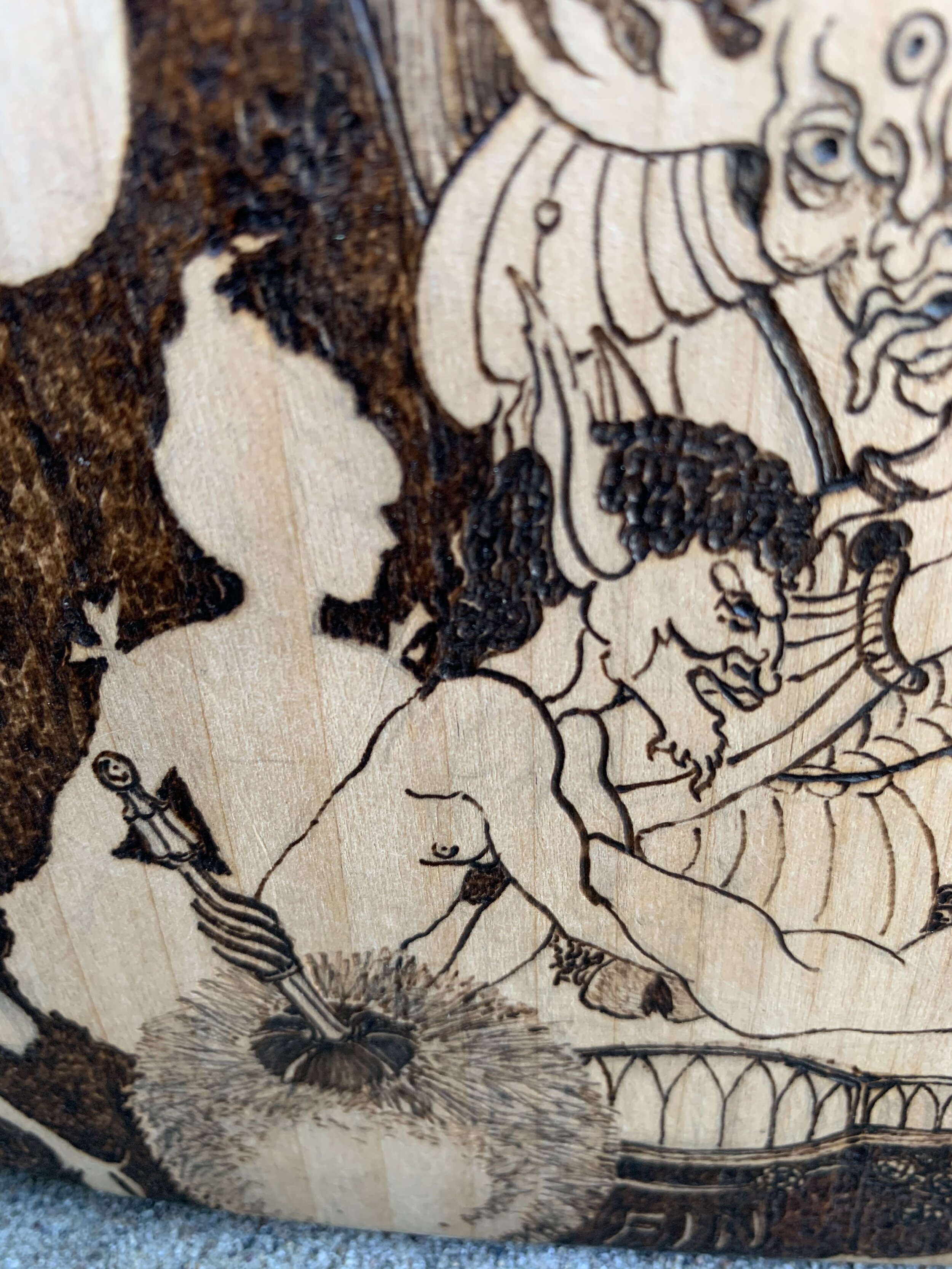
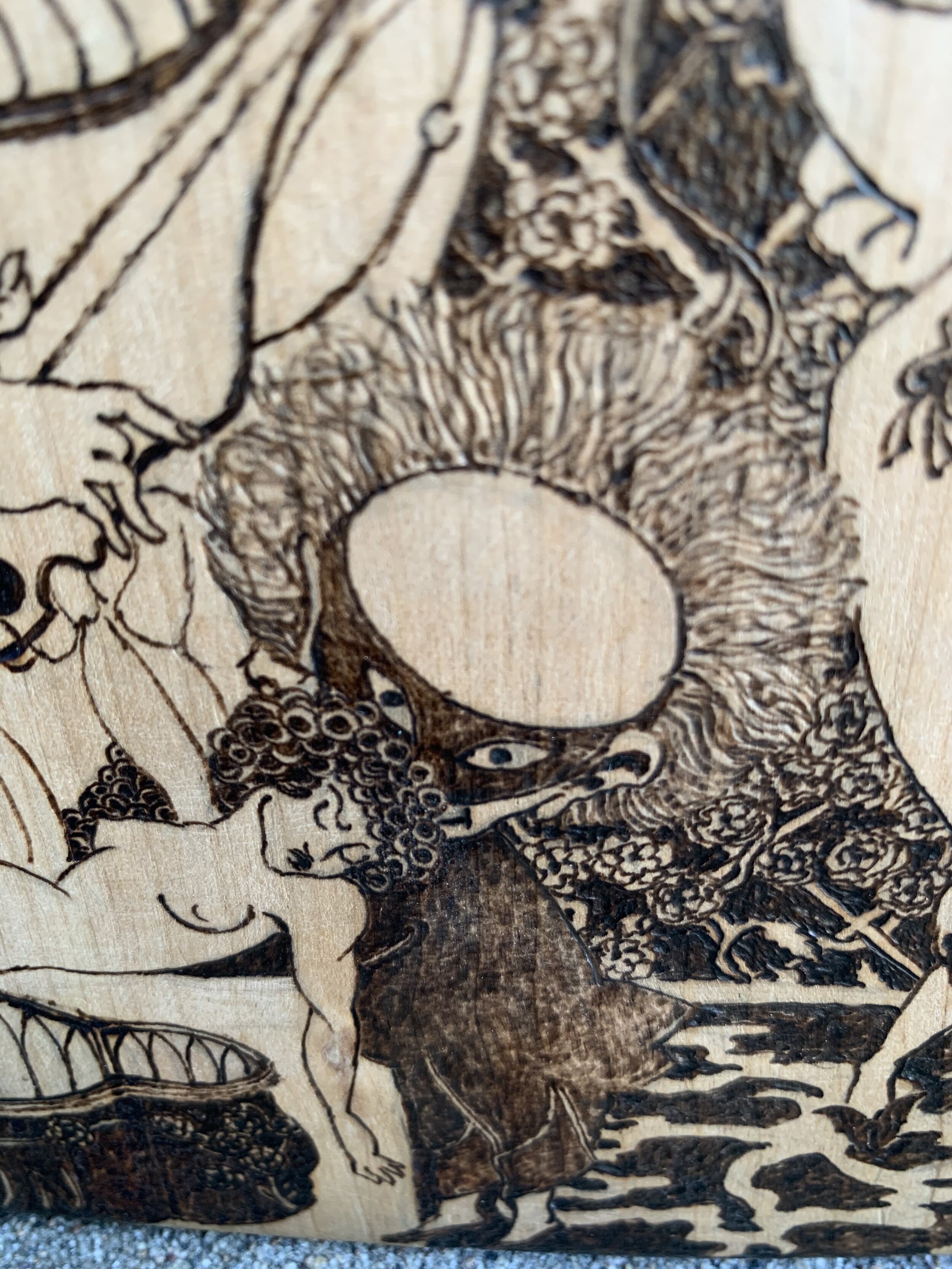
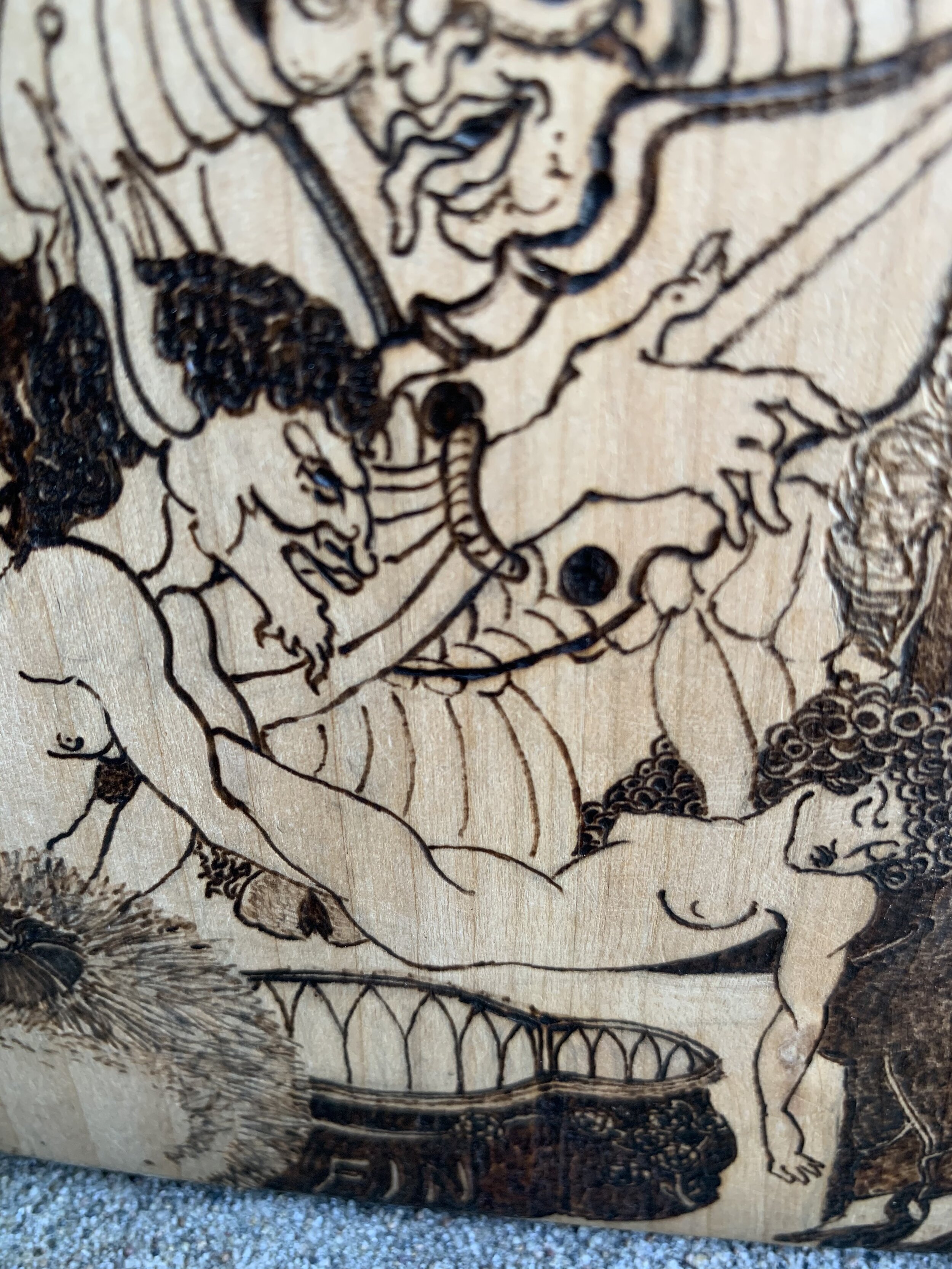

Psyche & the Satyr Maron; The imp Celui, The Maiden Kore (persephone); the Old God of Fire


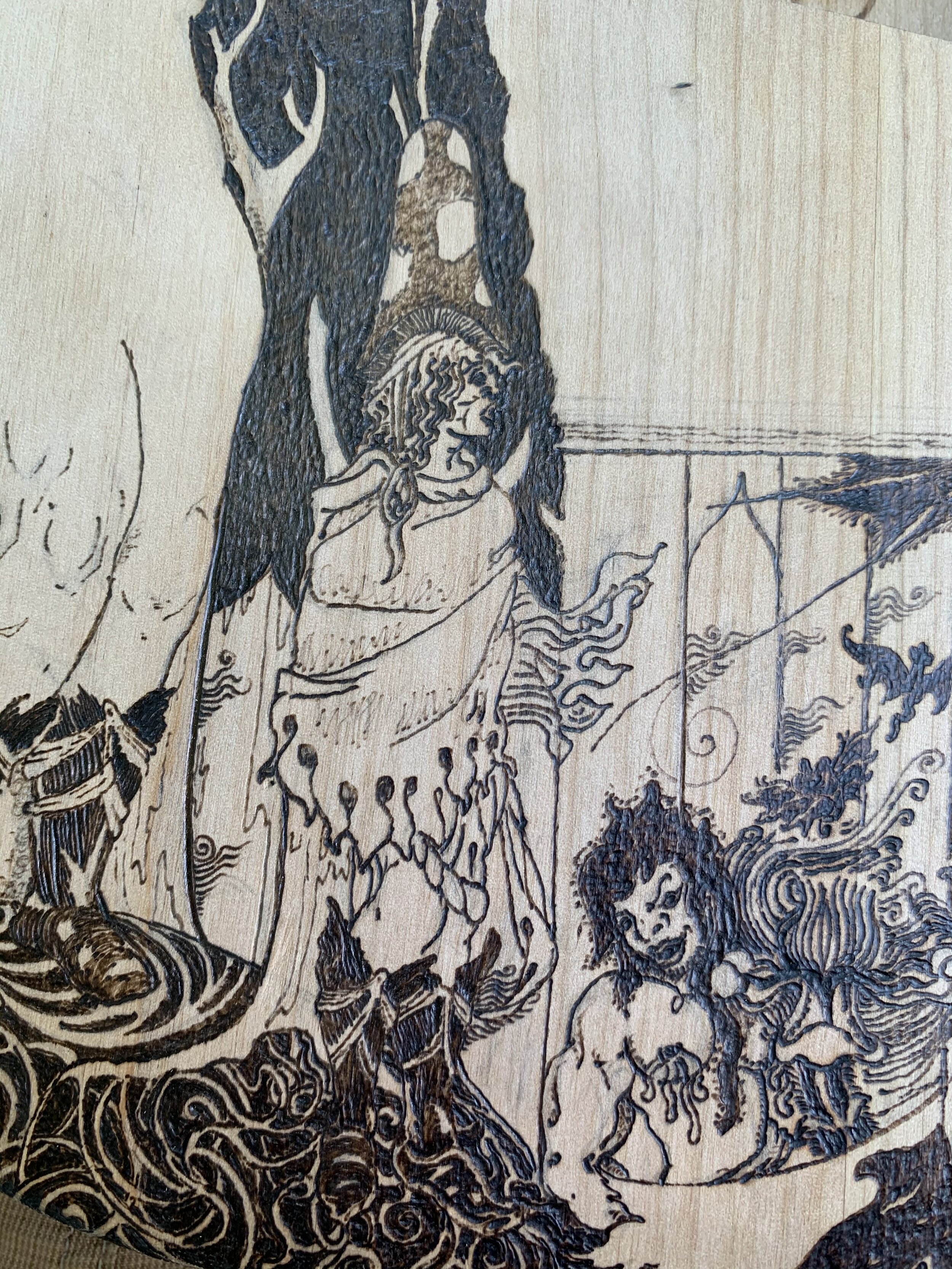
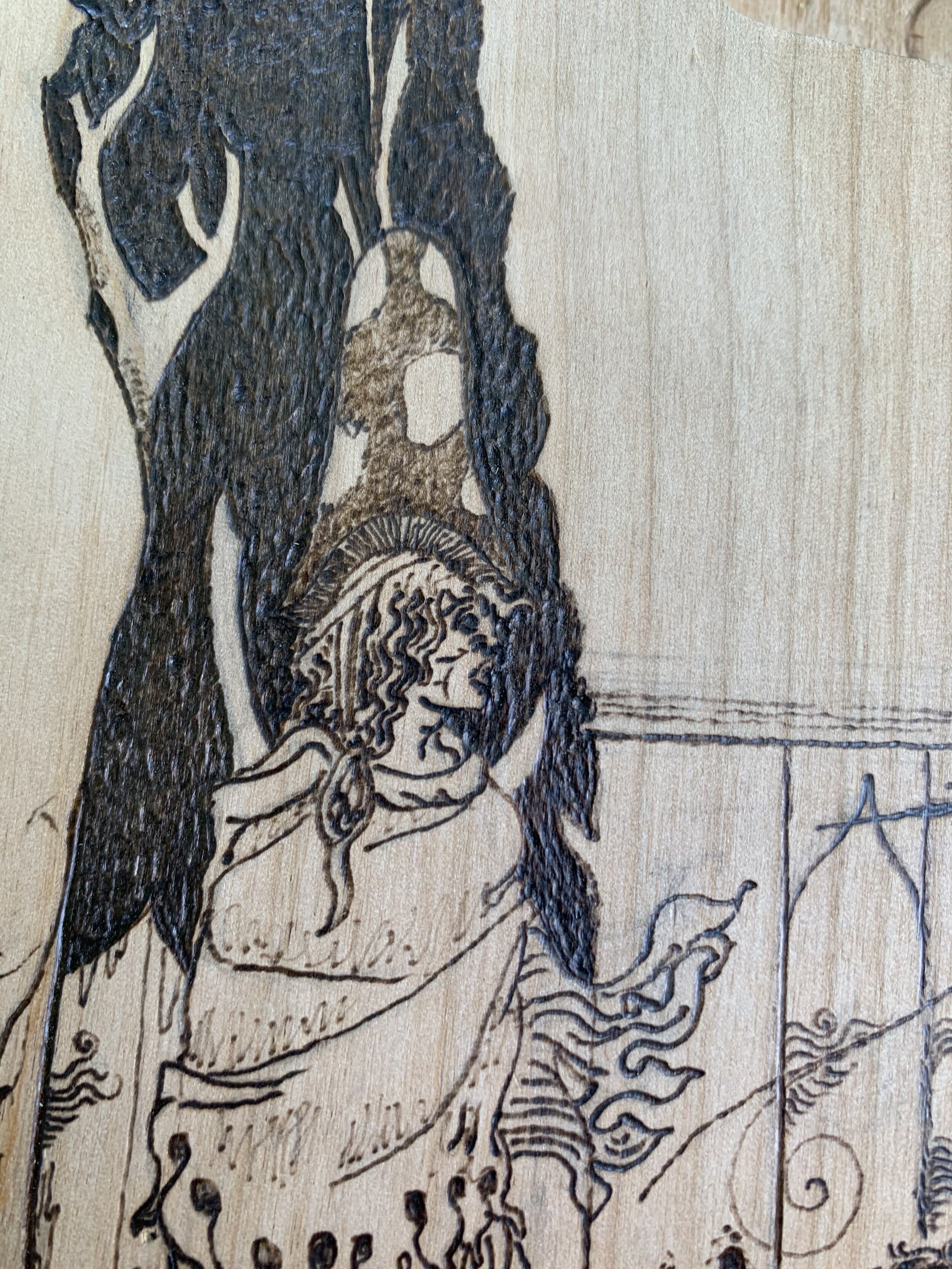
Midnight in the Orchard of Alchemy; the sleeping dragon, two views of the pilgrim/querent/musician.
